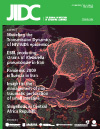Modeling the Transmission Dynamics of HIV/AIDS epidemics: an introduction and a review.
DOI:
https://doi.org/10.3855/jidc.542Keywords:
HIV transmission, susceptible, infectious, epidemiology, homosexual, parameters, heterosexualAbstract
Introduction: One of the greatest causes of morbidity and mortality in the Sub-Saharan Africa, particularly among young adults, is HIV/AIDS. Many mathematical models have been suggested for describing the epidemiology as well as the epidemiological consequences of the epidemic. A review of some these models would aid researchers in applying them to better understand and control the incidence and distribution of the disease in their countries.
Methodology: This study reviews some of the models proposed by various authors for describing the epidemiology as well as the epidemiological consequences of the HIV/AIDS epidemic and how some of them could be modified to suit the situations in other countries. We also discuss the limitations and the place of such models in the fight against the HIV epidemic.
Results: A clear explanation of the premises and assumptions on which the models were based was reached by reviewing the models across different scenarios.
Conclusion: Mathematical models have been very useful in HIV research, particularly for empirical studies on people living with HIV/AIDS (PLWHA). These models make predictions that generate questions of social and ethical interest.
Downloads
Published
How to Cite
Issue
Section
License
Authors who publish with this journal agree to the following terms:
- Authors retain copyright and grant the journal right of first publication with the work simultaneously licensed under a Creative Commons Attribution License that allows others to share the work with an acknowledgement of the work's authorship and initial publication in this journal.
- Authors are able to enter into separate, additional contractual arrangements for the non-exclusive distribution of the journal's published version of the work (e.g., post it to an institutional repository or publish it in a book), with an acknowledgement of its initial publication in this journal.
- Authors are permitted and encouraged to post their work online (e.g., in institutional repositories or on their website) prior to and during the submission process, as it can lead to productive exchanges, as well as earlier and greater citation of published work (See The Effect of Open Access).








